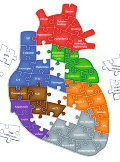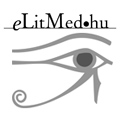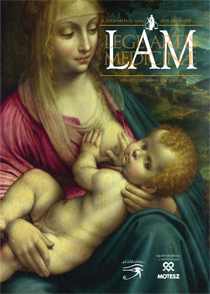The eLitMed.hu medical portal uses computer cookies for convenient operation. Detailed information can be found in the Cookie-policy.
Lege Artis Medicinae - 2018;28(11-12)
Content
[Mastitis and breastfeeding]
[Various degrees of mastitis affect a significant percentage of breastfeeding mothers. Prevention and effective treatment are important public health issues due to the severe pain, malaise, high fever, and possible complications. Among other causes for early termination of breastfeeding, the most prominent reasons are the pain, prolonged healing, abscess due to mastitis and the frequent recurrence of the disease. Proper management of mastitis and alleviating the symptoms influence the length of breastfeeding and hence leads to a positive outcome for both the mother’s and her child’s long term health. Nevertheless, there are inconsistencies worldwide regarding the diagnosis, cure and prevention of mastitis. The treatments are done mostly on empirical basis. Even though numerous articles have been published on the subject, the unequivocal results are yet to come. This overview summarizes the current knowledge and the dilemmas about mastitis as well as the prevention opportunities and therapies. It also discusses the new results on breastmilk microbiome research, which might change the approach towards mastitis treatment.]
[Modalities of the therapy of patients with high cardiovascular risk]
[International and Hungarian guidelines emphasize the need of the combinations in the therapy of hypertension. Single pill combinations (SPC) are preferred. The importance of the treatment reducing cardiovascular risk is underlined by the fact that in most hypertensive patients other cardiovascular risk factors, among them most frequently dyslipidemia is present. In addition to antihypertensive drugs these patients should be treated also with those decreasing plasma lipids. Adherence / persistence to therapy of patients is greatly improved by the use of single pill combinations. Today we also have SPCs decreasing both, blood pressure and plasma lipids. Among them there is the combination containing amlodipine and atorvastatin. Several international and Hungarian clinical studies have been conducted. Results of these investigations have been described in several publications. In this paper I summarise the most important results of some of these studies. ]
[Type 2 diabetes: what is the role of a General Practitioner in the treatment of diabetes?]
[The 2017 National Guidelines of the Hungarian Diabetes Association emphasize the individual treatment of diabetic patients and the strong, goal-oriented regulation of carbohydrate metabolism from recognition on. Beside monotherapy, primary dual or triple combination therapy may be applied in the treatment of patients. In primary care it’s the treatment of patients with type 2 diabetes where there is a lot to be done. We hope that the everyday use of the Professional Guidelines will contribute to a more successful diabetic care by General Practitioners (GPs). The holistic care of the GP’s team plays an important role in the primary, secondary and tertiary prevention of Type 2 diabetes, which accounts for more than 90% of all diabetic cases. ]
[Experimental investigation of the complex energy balance]
[The complex energy balance includes maintenance of both normal body mass and body temperature. In the homeostasis regulation it is important that the activities of several physiologic processes are balanced with each other, for example, the balance between food intake and energy expenditure is crucial to maintain normal body mass, while the balance between heat production and heat loss is vital in determining body temperature. Obesity and loss of body weight, as well as fever and hypothermia are consequences of the dysregulation in energy balance. In our research, we studied receptorial and neurohumoral mechanisms involved in the maintenance and in the impairment of energy balance. This paper gives an overview of our most important findings, which served as the basis of the application submitted to and awarded with 3rd prize by the Prof. Dr. Laszlo Romics Memorial Foundation. We review the physiologic role of transient receptor potential channels, mostly of vanilloid-1 (formerly: capsaicin receptor) in the regulation of body temperature and body mass. Among the neuropeptides which take part in the maintenance of energy balance, we present the thermoregulatory effects of alpha-melanocyte stimulating hormone and pituitary adenylate cyclase-activating polypeptide. Last, among the molecular mechanisms of systemic inflammation, which is characterized by thermoregulation disorders (e.g., fever, hypothermia), we recap the role of the vanilloid-1 and neurokinin-1 receptor, and bilirubin.]
[Identity formation of novel psychoactive substance users. Thematic content analysis of life narratives ]
[Authors rely on Susan Greenfield’s identity theory to explore life narratives of novel psychoactive substance users in a Hungarian sample (n=24). Main nodes of the conceptual network identified in the computer-aided content analysis were personal and institutional relational networks, processing of emotions and sensory experi-ence seeking.]
[IgG4-related gastropathy mimicking malignancy]
[The Immunoglobulin G4-related disease (IgG4-RD) along with its synonyms is recently a popular topic in the medical literature. This illness can affect almost every organ in the body therefore it is frequently discussed in any type of interdisciplinary forums. We presented an instructive case of IgG4-RD with gastric involvement in 2016. Hereby we share our pertinent experiences. We are not dealing with the IgG4-RD in general including its terminology problems, epidemiology, pathogenesis, detailed clinical/pathological appearances, diagnostic criteria and treatment. A 63-year-old male presented with symptoms of pylorus stenosis. The endoscopic findings and CT images were interpreted as those of a malignant tumour in the antrum of the stomach. So a subtotal resection was performed although the biopsy showed reactive proliferation of plasma cells without evidence of malignancy. Pathological examination of the surgical specimen confirmed an IgG4- associated sclerosing inflammation. The patient had an uneventful recovery. Our case is an example of rare, isolated formof IgG4-RD. ]
["Nowadays we know a great deal about the microscopic detail" - but do we know more about Axolotl than Antal Szerb?]
[In Antal Szerb’s novel, The Pendragon Legend, which was first published in 1934 (its first English translation came out in 1963), the excentric Earl of Gwynedd experiments with strange creatures. Reading the book based on mystic elements as well as their mockery, the reader gets quite a bizarre knowledge of axolotls. In this review, a detailed history of this amphibian (Ambystoma mexicanum) in Western scientific research is offered; beside the scientific data, of which presumably Antal Szerb was aware, the main trends in the axolotl studies of the recent decades, both their successes and failures, are also defined.]
1.
Clinical Neuroscience
Is there any difference in mortality rates of atrial fibrillation detected before or after ischemic stroke?2.
Clinical Neuroscience
Factors influencing the level of stigma in Parkinson’s disease in western Turkey3.
Clinical Neuroscience
Neuropathic pain and mood disorders in earthquake survivors with peripheral nerve injuries4.
Journal of Nursing Theory and Practice
[Correlations of Sarcopenia, Frailty, Falls and Social Isolation – A Literature Review in the Light of Swedish Statistics]5.
Clinical Neuroscience
[Comparison of pain intensity measurements among patients with low-back pain]1.
Clinical Neuroscience Proceedings
[A Magyar Stroke Társaság XVIII. Kongresszusa és a Magyar Neuroszonológiai Társaság XV. Konferenciája. Absztraktfüzet]2.
3.
Journal of Nursing Theory and Practice
[A selection of the entries submitted to the literary contest "Honorable mission: the joys and challenges of our profession" ]4.
Journal of Nursing Theory and Practice
[End of Life and Palliative Care of Newborns in the Nursing Context]5.
Journal of Nursing Theory and Practice
[Aspects of Occupational Health Nursing for Incurable Patients ]











